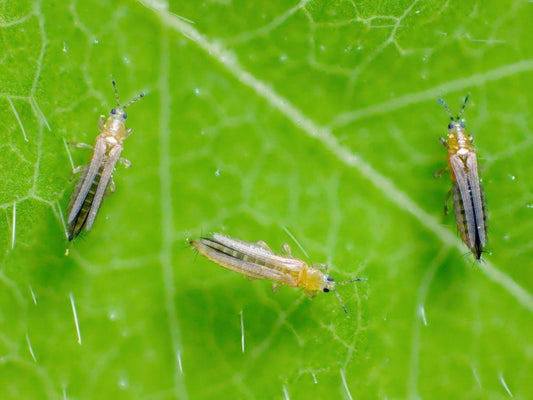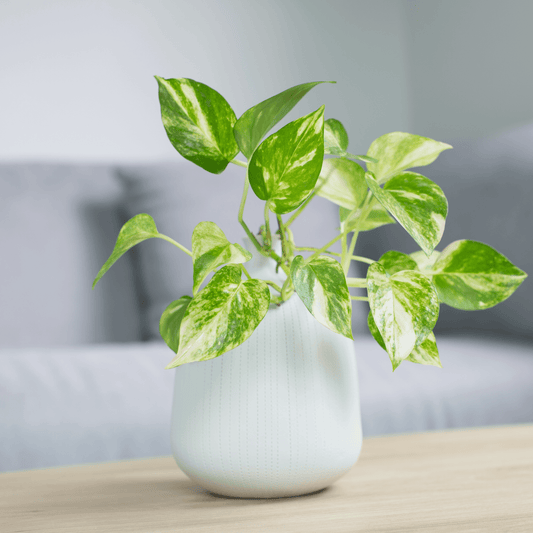How to Grow the Date Palm in Italy and Europe

Phoenix Dactylifera , commonly known as the date palm, is among the most versatile and adaptable palms, ideal for growing even outside of tropical climates.
This palm not only resists high temperatures, but can also tolerate more rigid conditions, up to -10°C (as long as it is for short periods). This makes it adaptable to the Italian and European climate in general, where it can live well as an ornamental plant bringing an exotic touch to your garden.
However, this plant requires special care and attention to thrive in climates like ours. In fact, we find it more commonly in the areas of southern Italy, especially in coastal locations. We find it less easily in central and northern Italy, especially in inland locations.
When grown in optimal conditions, the date palm can live for a surprisingly long time, with some plants living well over 100 years, and even up to 300 years.
Read on to learn more about this amazing plant and how to best grow it.

Want to add a Phoenix Dactylifera to your garden? I personally grow these beautiful palms from seed and they are available in my shop. Visit my shop to buy your own date palm!
Habitat and origins

Phoenix Dactylifera, known as the date palm, has been cultivated by humans for over 5,000 years. This long history of cultivation makes it one of the oldest plants cultivated for food and ornamental purposes in human history. The date palm played a crucial role in the economies and cultures of ancient civilizations in the Middle East and North Africa, and its importance continues to this day.
Its ancient and fascinating origins take us to the arid regions of the Middle East and North Africa. Countries such as Iraq, Saudi Arabia, Iran and Egypt are the native places of this palm , where it grows luxuriantly despite the extreme climatic conditions.
The date palm is historically important in these areas, not only for its beauty, but also for its nutritious fruit, dates. This plant is accustomed to poor soils and high salinity conditions, which allows it to easily adapt to different growing conditions.
In these native habitats, the date palm is exposed to temperatures that can vary dramatically: minimum temperatures can drop to 5°C, while maximum temperatures can exceed 50°C during the summer. The average annual temperature in these regions is generally around 2 5-30°C.
Date fruiting

Phoenix Dactylifera is famous for its fruit, dates, which are a source of food and trade in many cultures.
This is a slow-growing palm that takes several years to reach maturity. Under ideal conditions, it can begin to produce fruit after about 5-8 years, with the first significant fruiting occurring around 10-15 years. Maximum fruiting occurs when the palm reaches about 30 years of age.
The fruiting of the date palm is strongly linked to climatic conditions. In its native habitats of the Middle East and North Africa, the plant produces abundant fruit thanks to the long hot and dry seasons, bringing the fruits to full ripeness and their harvest from late summer until winter for some varieties.
Dates are ready to be harvested when their skin turns brown and begins to wrinkle . They should be picked gently by hand, rather than with mechanical tools, to avoid damaging the fruit.
To obtain dates from Phoenix Dactylifera, it is necessary to have both male and female palms, since this species is dioecious (a dioecious plant is a plant that has distinct male and female specimens, each of which produces only male flowers or only female flowers). Male palms produce the pollen needed to fertilize the flowers of female palms. Only female palms , once pollinated, can develop and produce dates.
The plant, although surviving in cooler climates , requires temperatures close to 40 °C for proper fruit ripening. In Italy and other regions of Europe, fruiting is less frequent due to less favorable climatic conditions. While summer temperatures can be high enough to favor growth, the cold season can prevent consistent fruiting.

Consequently, in Italy , Phoenix Dactylifera is grown mainly for ornamental purposes rather than for commercial production of dates. However, in some areas of Southern Italy (e.g. Sicily), where the climate is milder, it is possible to obtain a modest production of fruits, but not on a significant commercial scale.
How to Grow Phoenix Dactylifera in Italy

Growing Phoenix Dactylifera requires attention to various aspects to ensure healthy and lush growth. Here are the complete instructions for its care:
Soil preparation:
- Ideal soil: Phoenix Dactylifera prefers sandy, well-drained soil. Avoid heavy clay soils that can cause waterlogging.
- Soil Amendments: If your soil is clay, improve drainage by mixing in some potting soil and coarse sand, perlite, or gravel. You can use a good all-purpose potting soil or a garden potting soil. Also add organic matter such as well-rotted compost.
Location and climate:
- Exposure: Choose a location with full sun exposure. This palm thrives in warm, bright locations. A south-facing garden is ideal, while a building or wall protects it from the north.
- Wind protection: If you plant it in an open country plot, you could also plant tall hedges or install windbreaks around the perimeter of the plot to protect the palms from the cold winter winds.
Planting:
- Spacing: If you plant a row of palms or place Phoenix Dactylifera among other shrubs, leave at least 3-4 meters between plants to allow for optimal growth.
- Technique: Dig a hole twice the size of the palm's pot and make sure the plant's collar is level with the ground.
Irrigation:
- Frequency: This palm should be watered regularly during the growing season (spring and summer), keeping the soil moist but not soggy, to avoid root rot. Reduce watering in the fall and winter.
- Quantity: Provide water deeply, allowing the roots to develop deep into the soil.
- Method: Consider installing a drip irrigation system, which provides consistent, even watering. This system is especially useful for preventing overwatering and ensuring the soil stays moist without becoming soggy. Adjust the system to deliver water slowly, so it can penetrate deeply into the soil. If you water by hand, it is best to avoid wetting the trunk and leaves to prevent fungal diseases and rot.
Fertilization:
- Fertilizer type: Use a balanced fertilizer specifically for palms or an organic fertilizer rich in potassium and magnesium.
- Frequency: Fertilize every 2-3 months during the growing season.
Winter protection:
- Mulch: Apply a layer of mulch around the base of the plant to protect the roots from the cold. Winter mulching can be done with various materials that protect the roots from the cold and help retain moisture in the soil. When applying mulch, be sure to cover a large area around the base of the plant to maximize protection. Here are some options:
- Straw : an excellent natural insulator that retains heat and protects the soil.
- Pine Bark : Helps prevent soil erosion and keeps soil temperature stable.
- Dry leaves : an easily available material that offers good thermal protection.
- Wood chips : provide long-lasting and effective coverage against the cold.
- Pine needles : These create an insulating barrier and are especially useful in cold climates.
- Compost : in addition to protecting, it enriches the soil with nutrients.
- Non-woven fabric (TNT) : a synthetic material that offers excellent protection against the cold and bad weather.
- Covering: In areas with harsh winters such as central and northern Italy, cover the palm leaves and trunk with non-woven fabric or protective sheets to protect them from frost.
Care of young potted plants:
- Soil: use a well-draining soil, preferably specific for palms or Mediterranean plants. If you want to make it yourself, use a good professional soil for green plants adding river sand for gardening, perlite and pumice. Even in a pot, you need to fertilize the palm, in fact it is even more necessary.
- Repotting: Repot every 2-3 years in a slightly larger pot to allow the roots to expand. In a pot this palm, which already has a slow growth by nature, grows even more slowly. Or rather it could grow more quickly in the first years of its life but subsequently it will not reach notable heights like others planted in the open ground.
- Watering: Keep the soil constantly moist, but avoid soaking it. Remove excess water from the saucer. When watering, do so generously, as a well-draining substrate will absorb only the water needed and allow the excess to escape. Wait for the soil to dry out before watering again to avoid root rot. If the palm is young, do not leave it without water or moisture for more than 3-4 days to avoid the risk of death.
Is it better to buy an adult or young palm tree?
Mature palm trees can be very expensive , with prices varying greatly depending on the size and age of the plant.
Buying a young palm in a pot , like the ones I sell in my shop, offers significant advantages: they are less expensive, easier to transport and adapt to the new environment. However, they require patience and care for many years before reaching maturity.
On the other hand, purchasing a mature palm tree can bring immediate aesthetic benefits to your garden , without having to wait years to see the plant grow. These mature palms can provide an immediate visual impact and added value to your property. However, they are more difficult to transport and plant, requiring skilled workers and appropriate equipment, both for transport and planting.
Maintenance
Remove dry or damaged leaves by cutting them with sharp, sterilized scissors or blades (sterilize with heat or with alcohol or bleach) to keep the plant healthy and promote good air circulation.
Maintenance of adult palms such as Phoenix Dactylifera and Phoenix Canariensis is neither easy nor cheap. When the palms have reached considerable heights, specialized workers are needed, for example to prune dry or diseased leaves, but you can also get a telescopic shear if you want to do it yourself.
Date Palm Pests and Diseases

Check the leaves and trunk regularly for signs of pests such as mites, scale insects or fungi and use specific treatments if necessary.
The red palm weevil is a major threat to palm trees, including Phoenix Dactylifera. This insect bores into palm trees to lay its eggs, causing significant damage to the plants. The larvae feed on the internal tissue of the palms, compromising their health and leading to the death of the plant if left untreated.
The main diseases that can affect Phoenix Dactylifera include:
- Red Palm Weevil: As mentioned, the Red Palm Weevil is a beetle that infests palm trees, causing serious damage if not treated in time. Treatment may include the use of specific insecticides and cultural practices to monitor and prevent infestation.
- Fusarium wilt: This fungal disease can cause yellowing of the leaves, wilting, and death of the palm. Treatment may require removal of infected plants and the use of fungicides.
- Bacterial Diseases : Bacterial infections such as yellow leaf syndrome can cause yellowing of leaves and general deterioration of the plant. Treatment often involves the use of preventative measures such as good irrigation management and removal of infected leaves.
To combat the red palm weevil and other diseases, it is essential to adopt these preventive and curative measures:
- Regular Monitoring : Inspect palm trees regularly for signs of infestation or disease.
- Chemical treatments : Use specific insecticides and fungicides to treat infestations, following the instructions on the package.
- Cultural practices : Maintain good soil drainage, avoid water accumulation around the roots and promptly remove infected plant parts.
- Professional advice : In severe cases, consult an expert or agronomist for a targeted and specific treatment.
Prevention is essential to protect Phoenix Dactylifera from these threats, thus ensuring the health and longevity of the palms.
Cultivation of Phoenix Dactylifera in the rest of Europe

The date palm can be grown successfully in several European regions , although climatic conditions can vary greatly from one location to another.
In warm and mild climates such as Spain, cultivation is generally easier than in Italy, benefiting from less harsh winters.
Even in more northern countries such as France, Germany, Austria, Switzerland, Holland, Belgium and Sweden, it is possible to grow this palm, if adequate precautions are taken to protect it from severe cold. In these areas, many growers opt for portable pots or containers that allow the plant to be moved to sheltered locations during the winter months, or use special covers to protect the palms from frost. When growing it in the garden in these regions, it is best to do so in a sheltered location, such as near a south-facing wall or under a porch. This can provide natural protection from wind and cold.
These approaches, which can also be used in the coldest regions of Italy, allow you to enjoy the exotic beauty of Phoenix Dactylifera even in more climatically challenging contexts.
In summary, if you cannot guarantee proper care, it is better to avoid planting a Phoenix Dactylifera in the ground. Alternatively, grow it in a pot and place it on a veranda, under a porch or near a south-facing wall. Potted growth is slower, but allows for greater protection and easier maintenance.
Want to add a Phoenix Dactylifera to your garden? I personally grow these beautiful palms from seed and they are available in my shop. Visit my shop to buy your own date palm!





